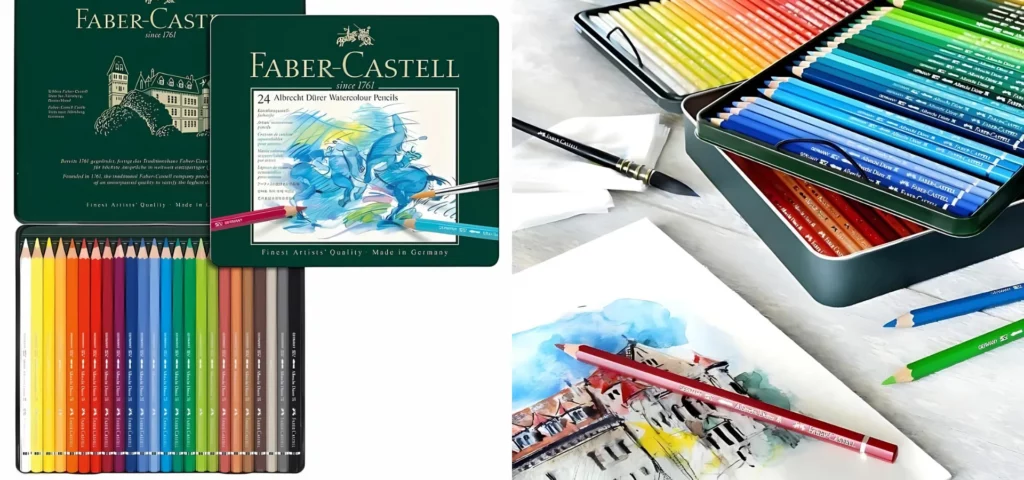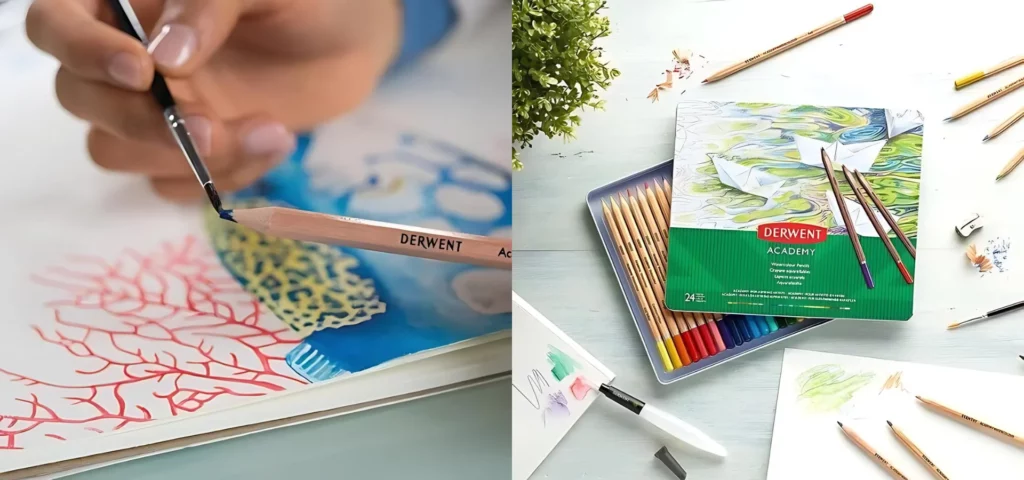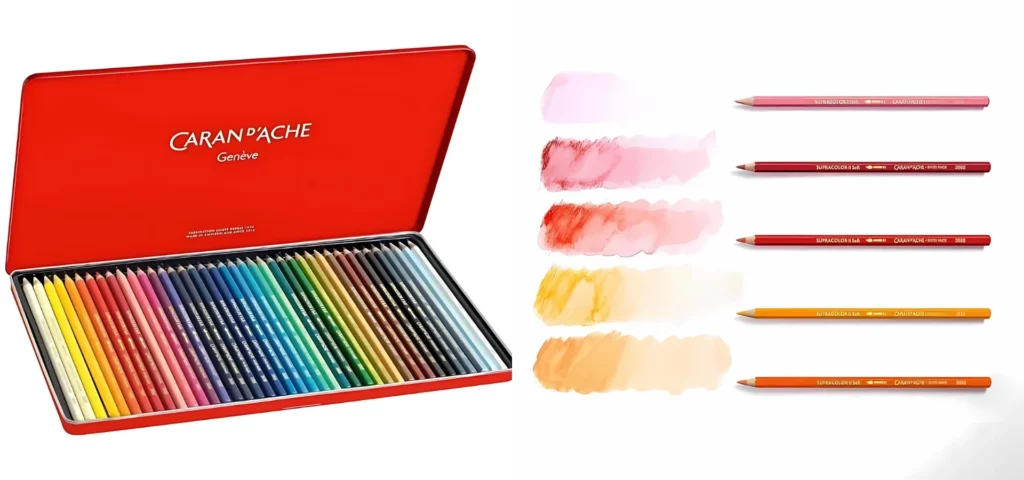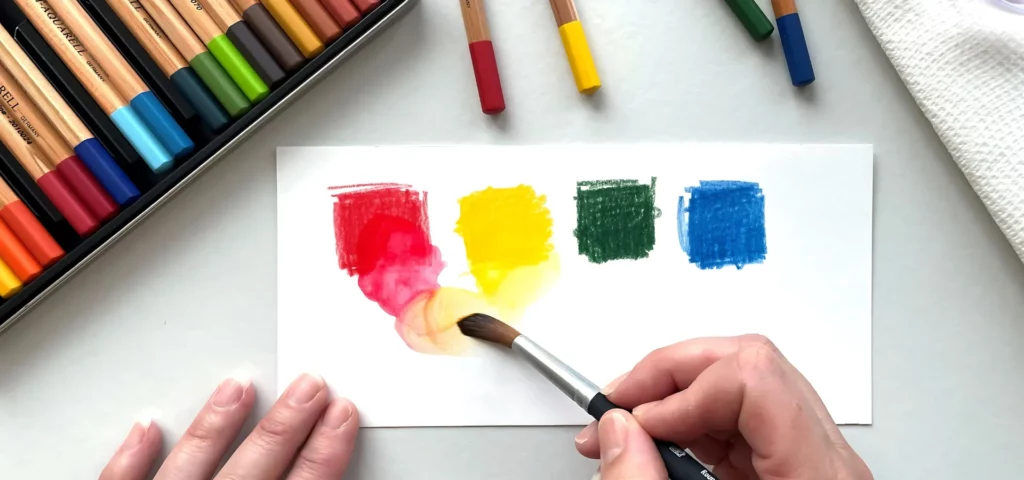Exploring Water Soluble Pencils
Introduction to Watercolour Pencils
Watercolour pencils are the artistic Swiss Army knives you didn’t know you needed. These versatile tools can be used both as regular coloured pencils and as watercolours, offering an extensive range of creative possibilities. When dry, they function just like your typical coloured pencils, but introduce a little water, and voilà! You get the fluidity and visual effects of watercolour paint. This makes them an excellent choice for artists who want to dip their toes into watercolour techniques without diving headfirst into the deep end (Incredible Art).
Benefits of Water Soluble Pencils
Water soluble pencils offer numerous benefits, making them a popular choice among artists of various skill levels. Here are a few compelling advantages:
- Versatility: Watercolour Pencils can be used dry or wet. With the flexible transition between drawing and painting, artists can blend colours seamlessly or create intense hues and delicate washes (Faber-Castell).
- Portability: These pencils are perfect for artists on the move. Unlike traditional watercolours, they are less messy and easier to transport.
- Detailing: With a sharp point, you can create intricate details. Add water to the mix, and you can fill broad areas without losing the finesse.
- Control: Balancing the amount of water allows artists to control the strength and texture of the colour, making it ideal for various artistic techniques.
- Ease of Use: Great for beginners who find traditional watercolours daunting, as the pencils allow for precision and less mess (Incredible Art).
Water Soluble Pencil Benefits:
| Feature | Benefit |
|---|---|
| Versatility | Draw and paint with the same tool |
| Portability | Less mess, easy to carry |
| Detailing | Sharp point for intricate designs |
| Control | Balance water for varying textures |
| Ease of Use | Suitable for beginners |
For those who truly want to make the most of their art supplies, the Faber-Castell Albrecht Durer Watercolour Pencils allow for the mixing and blurring effects typical of watercolours, thanks to their high-quality pigments and wax emulsifiers (My Art Shop). These pencils offer a range of vibrant, lightfast pigments for unlimited colour mixing possibilities, enabling smooth dissolution with water to produce brilliant washes and fine details (Faber-Castell).
Faber-Castell Albrecht Durer Pencils

Faber-Castell Albrecht Durer Watercolour Pencils are a beloved choice among artists seeking versatility in their artwork. They offer the unique ability to be used both as traditional colored pencils and as water-soluble tools, providing a range of artistic possibilities without having to switch mediums.
Features and Characteristics
The Albrecht Durer Watercolour Pencils by Faber-Castell are considered top-tier water-soluble pencils. A key feature is their exceptional lightfastness, which ensures that your masterpieces remain vibrant over time (Incredible Art). They come in a glorious 120-color set, covering everything from muted earth tones to vivid primary hues, making them a dream for any artist.
These pencils boast pigments of the highest quality, designed to be beautifully rich whether you’re using them dry or with water. When activated with water, the pigments disperse to create a seamless blend, mimicking traditional watercolor paints. This feature is especially useful for beginners who might find pure watercolour paints a bit intimidating. The consistency allows artists to control the color more precisely, reducing the unpredictable nature of wet-on-wet techniques.
| Feature | Detail |
|---|---|
| Colors Available | 120 |
| Lightfastness | Excellent |
| Usage | Dry and Water-Soluble |
| Pigment Quality | High |
Artistic Applications and Techniques
Artists can leverage the versatility of Faber-Castell Albrecht Durer pencils for various techniques and applications. One of the most exciting aspects of these pencils is their ability to transition smoothly between detailed line work and painterly washes. For instance, an artist can sketch intricate designs and then apply a wet brush to blend and soften the colors, creating a harmonious and fluid effect.
Other techniques include:
- Dry Blending: Use the pencils on dry paper and blend using just the pencils or with a blender pencil.
- Wet Blending: Apply water after coloring to blend the colors smoothly and achieve a watercolor effect.
- Layering: Build up layers of color to create depth and dimension.
- Scumbling: Create texture by applying small scribbles of color, ideal for backgrounds and foliage.
In summary, Faber-Castell Albrecht Durer Watercolour Pencils offer unparalleled flexibility and quality, making them a coveted tool in any artist’s collection. Their blend of tradition and modern innovation allows for a breadth of artistic expression, making the transition from pencil to paintbrush feel as smooth as silk.
Dive into a world of creative potential with Faber-Castell’s masterfully crafted water-soluble pencils, and make waves in your artistry with every stroke!
Comparison with Other Brands
Derwent Watercolour Pencils

Crayon aficionados often sing praises about the charm of Derwent Watercolour Pencils. These pencils provide a unique experience compared to Faber-Castell Albrecht Durer. They are described as chalky and pastel-like, offering a smoother application with vibrant colors, even when used dry (Art Pandemic).
Features:
- Texture: Chalky and pastel-like
- Application: Smooth, vibrant colours when dry
- Performance When Wet: Muted shades, great for layering
- Cost: More affordable than Faber-Castell
Caran D’Ache Supracolor Pencils

Caran D’Ache Supracolor Pencils often find themselves in the hands of artists looking for rich color and high-quality performance. These pencils are famed for their superior pigment quality and water solubility, offering an excellent watercolor effect.
Features:
- Pigment Quality: Superior, rich colors
- Water Solubility: Excellent, providing a genuine watercolor effect
- Durability: High levels of lightfastness
- Cost: Higher than Derwent but comparable to Faber-Castell
Caran D’Ache Supracolors might tickle your fancy if you’re after rich pigments and a genuine watercolor effect. They’re priced similarly to Faber-Castell Albrecht Durer but generally offer excellent performance. Artists often hotly debate which brand triumphs in quality and durability, making it essential to try both to see what suits your creative needs.
Lyra Rembrandt Aquarelle Prestige Set

Ah, the Lyra Rembrandt Aquarelle Prestige Set – the Rolls Royce of water soluble pencils. This prestigious wooden box set includes 96 Aquarelle pencils and is revered for its highly light-resistant pigments, providing intense, bright colors that would make a peacock jealous (My Art Shop).
The pencils are designed with giant water-soluble leads containing wax emulsifiers, enabling artists to mix and blur the colors like watercolour paints. Many adore these pencils for their ability to achieve transparent effects effortlessly. Here’s the fun part – the colours are so vibrant, you might want to wear sunglasses while you work!
Using Watercolour Pencils
Working with water soluble colouring pencils opens up a world of creative opportunities. Whether you are just getting started or looking to refine your techniques, this section will provide guidance on techniques for beginners and tips for creative application using Faber-Castell watercolour pencils.
Techniques for Beginners
Learning to use watercolour pencils effectively can be less intimidating than traditional watercolours. Here are a few beginner-friendly techniques:
- Dry Colouring and Wet Brush:
- Colour your drawing with the pencils just as you would with regular coloured pencils.
- Use a wet brush to blend the colours. This technique can produce beautiful watercolour effects without the stress of working with paint.
- Wet Pencil on Dry Paper:
- Dip the tip of the pencil in water and then draw directly on dry paper.
- This creates bolder, more saturated colours immediately, ideal for vibrant and intense effects.
- Layering and Blending:
- Layer different colours dry and then blend with water.
- This technique can help you understand how water affects pigments and how colours mix and move across the paper (Incredible Art).
Tips for Creative Application
To turn your art into a masterpiece, here are some creative tips:
- Work on Scrap Paper First:
- Always test colours and techniques on scrap paper before applying them to your final artwork (Faber-Castell).
- Keep Your Pencils Sharp:
- A sharp pencil can offer more precise lines and details. Use a good quality sharpener to maintain the tips.
- Experiment with Different Paper:
- Different papers can produce various effects. Try using papers with different textures and weights to see what works best for your style (My Art Shop).
- Use as Mixed Media:
- Combine watercolour pencils with other media like ink, pastel, or graphite for unique textures and effects.
- Vary Pressure and Layering:
- Light pressure creates a light wash, whereas heavy pressure results in richer, deeper colours. Layering multiple colours can produce complex and interesting results.
- Maintain Your Tools:
- Clean your brush between colour applications to avoid muddy colours. Use high-quality brushes for smoother blending.
Enjoy the journey of discovering watercolour pencils, as they can efficiently bridge the gap between drawing and painting (Art Pandemic). Whether you’re a beginner or experienced, always let your creativity flow!
Choosing the Right Water Soluble Pencils
When selecting water soluble colouring pencils, artists must consider various factors to ensure they get the most bang for their buck.
Factors in Selecting Pencils
Choosing the right set of water soluble pencils involves more than just grabbing the brightest pack on the shelf. Here are some key factors to consider:
- Pigment Quality: Ensuring the pencils have high-quality, water-soluble pigments like those in the Faber-Castell Albrecht Dürer Watercolour Pencils can make a huge difference in vibrancy and durability.
- Lightfastness: If your artwork is destined for display, you’ll want pencils that boast excellent lightfastness, ensuring your masterpieces don’t fade faster than a celebrity marriage. The Albrecht Dürer line is known for this feature.
- Number of Pencils: Do you want a small, manageable set or a behemoth collection that makes you feel like a wizard wielding a wand? Brands like Faber-Castell offer sets ranging from a modest 12 to an epic 120 pencils.
- Binder Quality: Good water soluble pencils have binders that dissolve easily in water, allowing for smooth blending and layering. This transforms the pigments into something akin to watercolor paint. (JetPens)
Selecting the Right Paper
When working with watercolour pencils, selecting the right paper can make the difference between a masterpiece and a crumpled mess of damp disappointment. Let’s dive into the world of watercolour paper textures and paper weight considerations, shall we?
Watercolour Paper Textures
Watercolour paper comes in three fabulous textures: hot press, cold press, and rough. Each texture offers a unique surface for your artistic endeavours.
- Hot Press: Smooth as a slip ‘n slide on a summer’s day. Great for detailed work and less texture.
- Cold Press: The Goldilocks of textures, not too rough, not too smooth. Ideal for creating a bit of texture.
- Rough: The bumpy ride of the trio, excellent for achieving heavy texture and pronounced brushstrokes.
Considering you likely have artistic flair, cold press paper is commonly recommended. It provides that dreamy balance, allowing the pigments to shine brilliantly while enhancing the textural effects of your watercolour pencils (Incredible Art).
Paper Weight and Considerations
The weight of the paper determines how much water it can absorb without turning into a sad, soggy mess. Watercolour paper is marked by weight, typically in pounds (lb) or grams per square meter (gsm). Let’s break it down:
| Paper Weight | Description | Ideal Use |
|---|---|---|
| 190gsm (90 lb) | Light-weight paper. Bendier than a yoga master. | Light washes and dry techniques |
| 300gsm (140 lb) | Medium-weight paper. Hits the sweet spot. | Most watercolour techniques |
| 640gsm (300 lb) | Heavy-weight paper. Built like a tank. | Heavy washes and layers of colour |
The 300gsm paper is the most commonly used for watercolour paintings and is often recommended for use with Watercolour Pencils. It provides a good balance, absorbing water well without excessive warping. Let’s face it, nobody wants their artwork to go all wibbly-wobbly halfway through a masterpiece.
Be sure to experiment with different qualities of watercolour paper to find your favourite. Grab some scrap paper for testing your techniques, keep your pencil tips sharp, and prepare for some smooth and rich colour distribution with those luscious, lightfast pigments in your watercolour pencils.
By considering user feedback and exploring these popular brands, you can confidently choose the best water soluble pencils for your artistic needs. Happy colouring!


